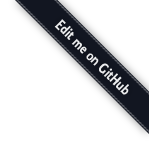Configuration¶
While writing a Substance D application is very similar to writing a Pyramid application, there are a few extra considerations to keep in mind.
Scan and Include¶
When writing Pyramid applications, the Configurator supports
config.include and config.scan Because of ordering
effects, do all your config.include calls before any of your
config.scan calls.
Using RelStorage¶
Content in Substance D is stored in a Python object database called the ZODB. The ZODB has deep integration with Pyramid. When developing Python applications that use ZODB, you have a number of storage options:
FileStorageis the simplest and is used in the development scaffolds for Substance D. That is,development.iniis configured useFileStorage. Just a file on disk, no long-running server process.ZEOkeeps a file on disk but runs a server process that manages transactions over a socket. This allows multiple app servers on multiple boxes, or background processes such as deferred indexing, to access the database.- RelStorage stores and retrieves the Python objects from a relational database. This is the preferred deployment option for applications that need trusted reliability and scalability.
Switching between storages is mostly a matter of editing your configuration file and choosing a different storage.
Note
While RelStorage uses an RDBMS for transactions, storage, retrieval, failover, and other features, it does not use SQL or decompose your Python objects into columns and joined tables.
Although RelStorage supports a number of RDBMS packages, we’ll focus on PostgreSQL in these docs.
RelStorage + PostgreSQL Configuration¶
First, read the RelStorage docs, focusing on the PostgreSQL section and the command line needed for database setup. In particular, make sure that you:
Have a system user account named
database:$ sudo su - postgres $ createuser --pwprompt zodbuser $ createdb -O zodbuser zodb
The user that you created (e.g.
zodbuser) can make local connections
Next, we’ll make some changes to some of the configuration files. In
your setup.py, indicate that you need the RelStorage package
as well as the psycopg2 Python binding for PostgreSQL. This
presumes that the binaries for the PostgreSQL client are available on
your path.
In your configuration file (e.g. production.ini), the
[app:main] section should have:
zodbconn.uri = zconfig://%(here)s/relstorage.conf
We thus need a relstorage.conf file:
%import relstorage
<zodb main>
<relstorage>
blob-dir ../var/blobs
<postgresql>
dsn dbname='zodb' user='zodbuser' host='localhost' password='zodbuser'
</postgresql>
</relstorage>
cache-size 100000
</zodb>
Resetting Your Substance D Database¶
During development you frequently need to blow away all your data and start over. You can do this via evolution, but usually it isn’t worth the work.
This is very easy with FileStorage: just rm var/Data.fs* and
restart your app server. It is also easy with ZEO: shut down the
supervisor service, remove the data as above, restart it,
and restart the app server.
With RelStorage, you get a rich set of existing tools such as
pgadmin to browse and modify table data. You can, though,
do it the quickie way via bin/pshell and just delete the root
object, then commit the transaction.
If you need to remove evolve data as well, open up pshell and do
root._p_jar.root(). You’ll see the ZODB root
(not the app root). Inside of it is the app root and the evolve data.
